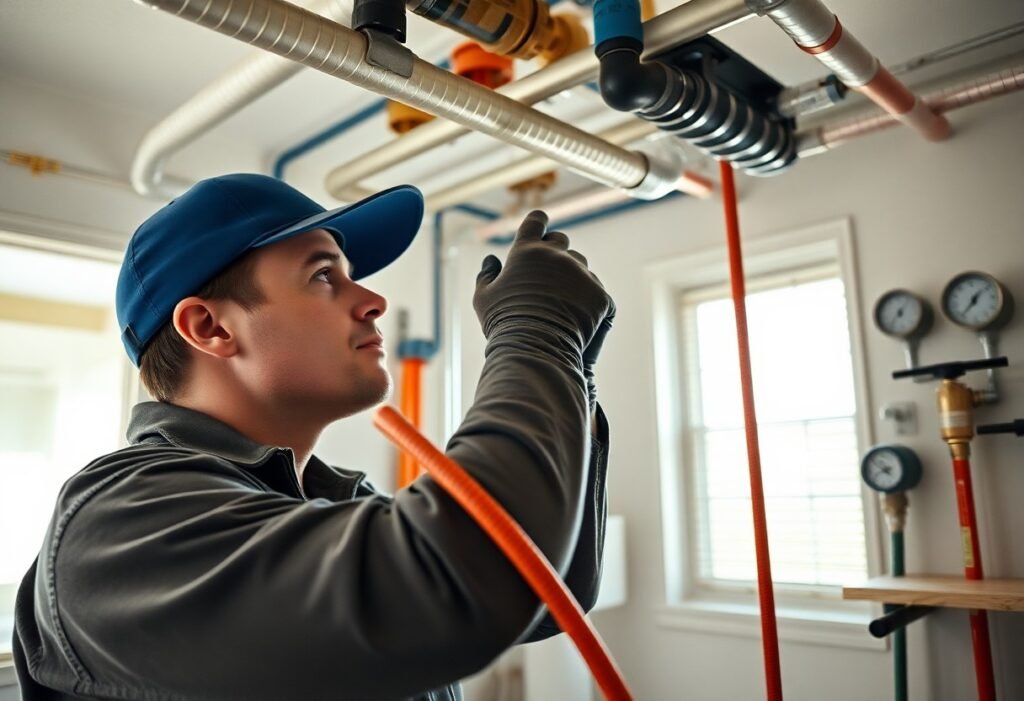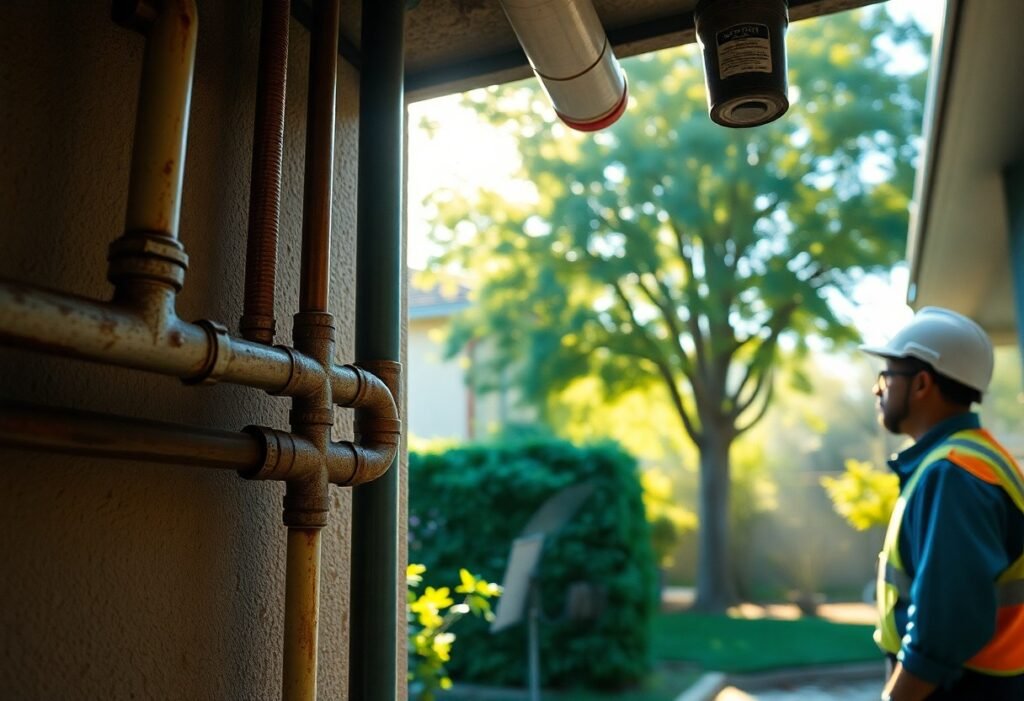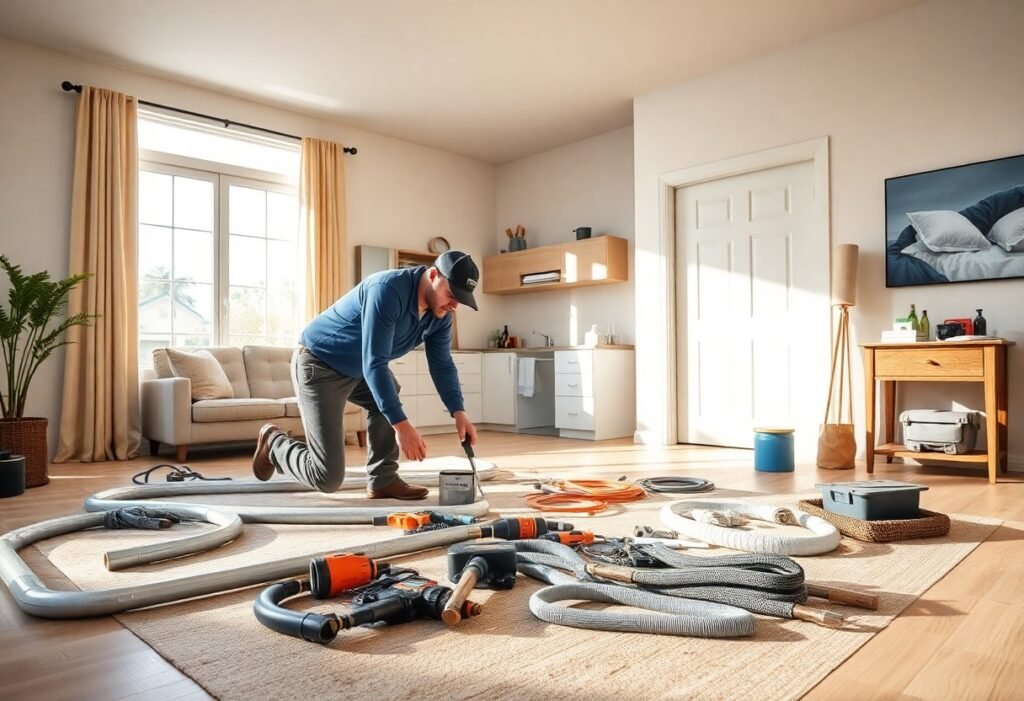Copper vs. PEX Repiping – Best Option for Brea, California Homes
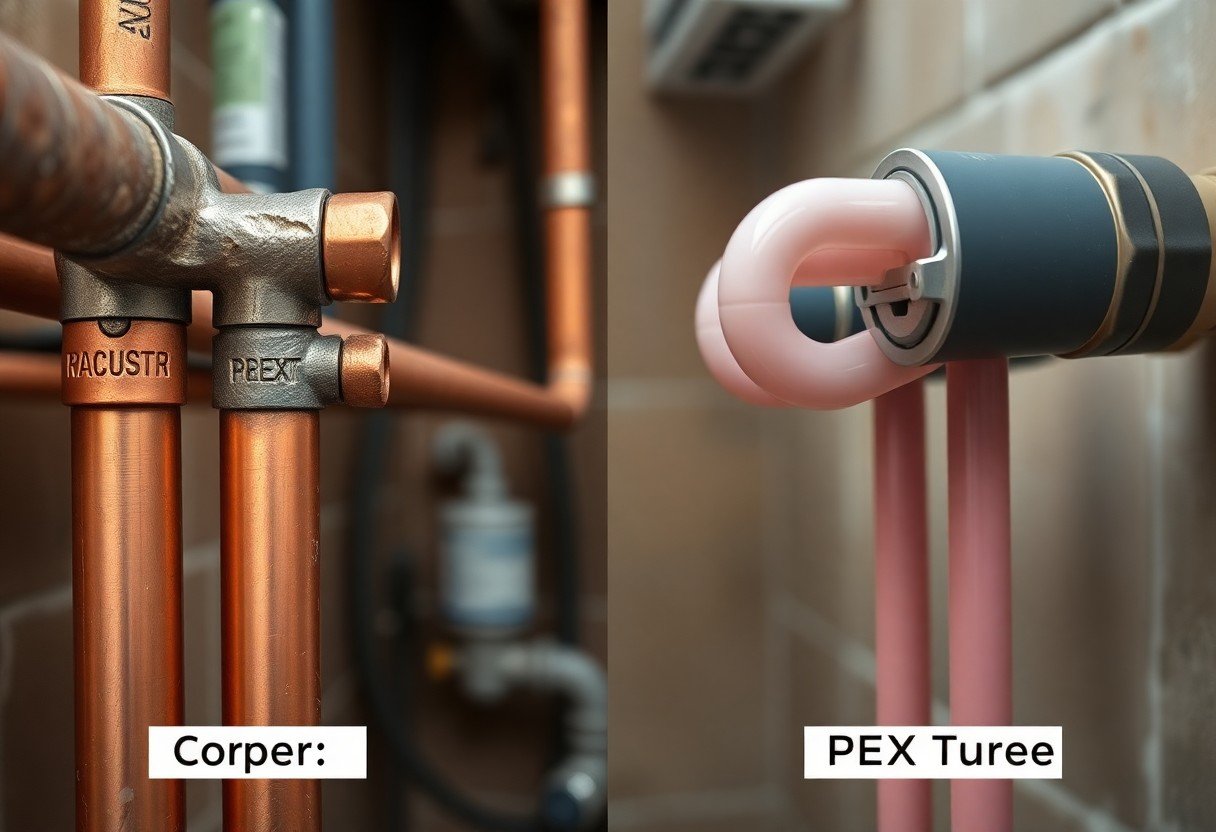
There’s a growing debate among homeowners like you in Brea, California, about the best repiping option: Copper or PEX. Both materials offer unique benefits and drawbacks that can significantly impact your home’s plumbing system. Understanding the cost-effectiveness, durability, and installation processes of each type will help you make an informed decision that suits your needs and budget. In this post, we’ll explore the advantages and disadvantages of Copper and PEX repiping, allowing you to choose the best solution for your home.
Key Takeaways:
- Copper piping offers durability and longevity, making it a reliable choice for homeowners in Brea, California, but it may come with a higher upfront cost compared to PEX.
- PEX is more flexible and easier to install, which can result in lower labor costs and fewer potential leak points, making it a practical option for many households.
- Both materials have their pros and cons regarding thermal expansion, corrosion resistance, and local climate considerations; it’s imperative to evaluate personal preferences and plumbing needs before making a decision.
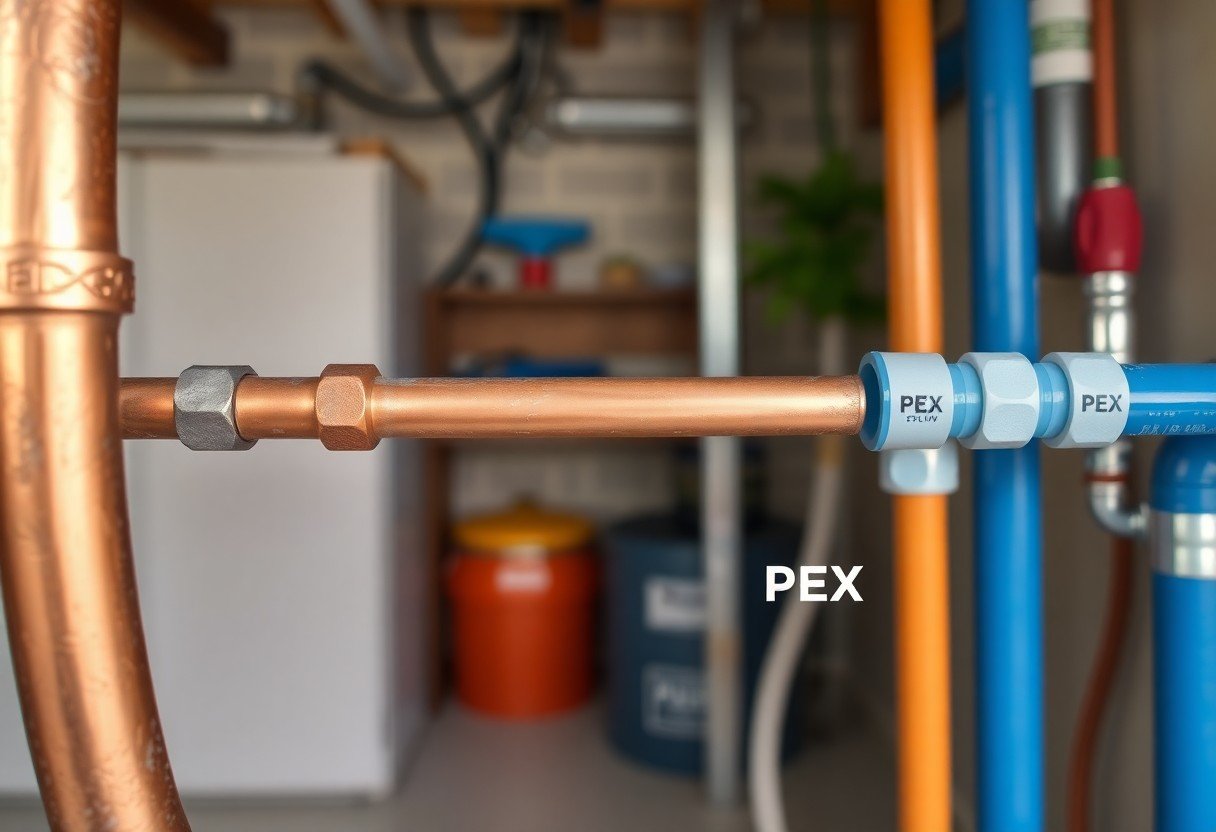
Decoding Material Differences: Copper vs. PEX
Copper and PEX each offer unique advantages that cater to different homeowner needs. Copper, a traditional choice, boasts unmatched durability but comes with a higher price tag and installation complexity. On the other hand, PEX is lightweight, flexible, and generally more cost-effective, making it a popular option for modern plumbing systems. Understanding these material differences can help you make an informed decision about your repiping needs.
Chemical Properties and Durability
Copper pipes are inherently resistant to corrosion and can withstand high temperatures, ensuring longevity in your plumbing system. However, they are susceptible to pinhole leaks over time, especially in reactive water conditions. PEX, on the other hand, is made from cross-linked polyethylene, making it resistant to scale and chlorine, along with providing a flexible nature that reduces the risk of leaks and fractures, especially in colder climates.
Thermal Conductivity and Energy Efficiency
The thermal conductivity of copper enables rapid heat transfer, making it ideal for hot water systems that require instant heating. However, this property can also lead to higher heat loss over longer runs. PEX’s lower thermal conductivity means that it retains heat more effectively, potentially lowering your energy bills by maintaining consistent water temperatures. This characteristic becomes particularly beneficial in regions like Brea, where temperature variations can impact your home’s efficiency.
In practical terms, while copper’s thermal efficiency serves its purpose for immediate hot water delivery, PEX offers a more energy-efficient alternative for long-term use. For example, homeowners who switch to PEX often report reductions in water heating costs, as the insulation qualities of PEX can help maintain water temperatures for longer durations. This added efficiency not only translates into lower utility bills but also provides a more comfortable experience overall, making PEX an attractive option for your repiping project.
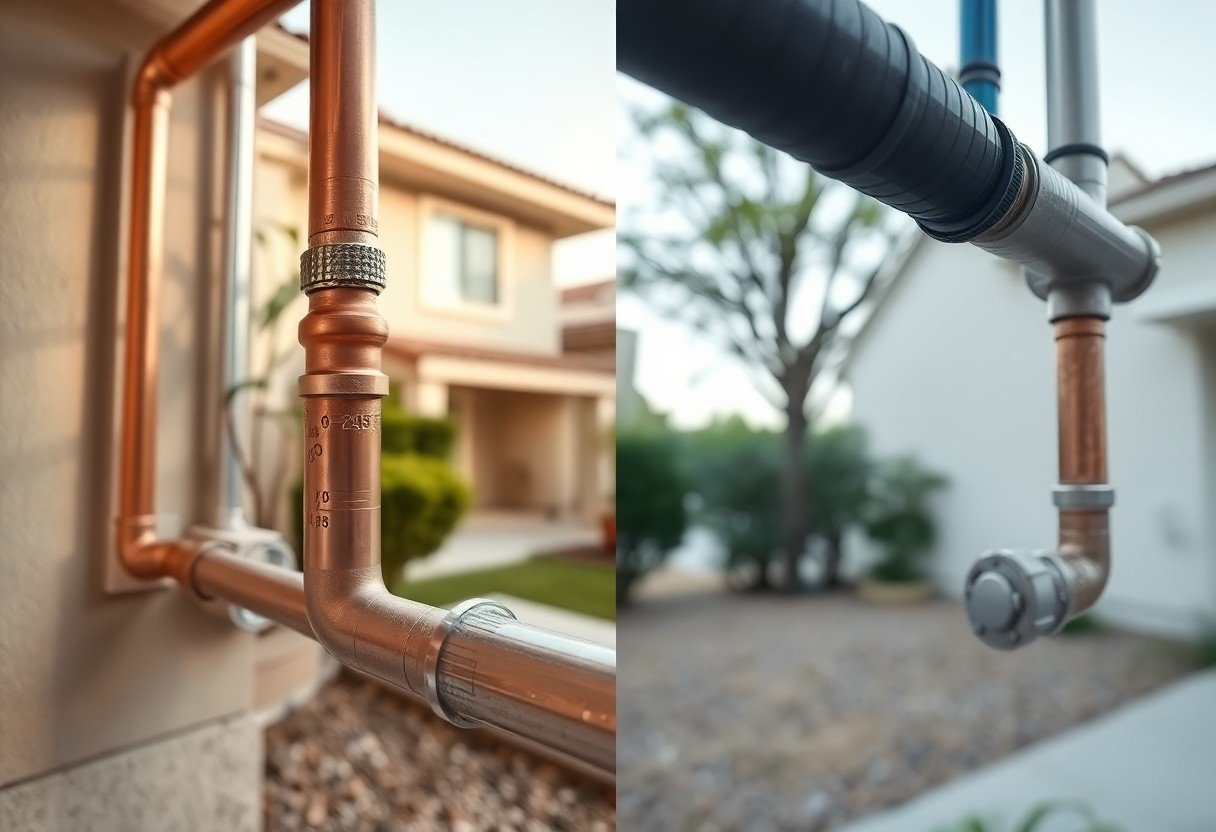
Financial Implications: Cost Analysis
Your choice between copper and PEX repiping significantly impacts your budget. Understanding the initial installation costs and long-term maintenance expenses helps you make a more informed decision, as both materials present unique financial considerations that can affect your wallet over time.
Installation Expenses and Labor Costs
The initial installation costs for copper piping typically run between $5 to $10 per linear foot, while PEX tends to be more affordable, averaging $1 to $3 per linear foot. Labor costs also vary, with copper installations usually requiring more skilled labor due to soldering techniques. You could end up paying around $50 to $100 per hour for plumbers experienced with copper. In contrast, PEX installations are generally quicker and less labor-intensive, which could translate to lower overall labor fees.
Long-term Maintenance and Replacement Expenses
Copper piping may need more maintenance over time, especially if corrosion occurs or joint leaks develop. The average lifespan of copper pipes is about 50 years, but any repairs can be costly. PEX, on the other hand, is resistant to corrosion and has a lifespan of 40 to 50 years, often requiring less maintenance. This durability leads to fewer repair costs, potentially saving you hundreds or even thousands in plumbing repairs over the decades.
When considering long-term expenses, PEX holds an edge in durability and maintenance. While both piping types have similar lifespans, the resistance of PEX to corrosion and scaling drastically reduces the likelihood of leaks and repairs. Additionally, if you choose PEX, you may not need to worry about repiping due to the high likelihood of corrosion in older copper systems. Overall, fewer pieces of maintenance can translate to significant savings when factors like labor costs and the potential disruption from plumbing repairs or replacements are factored in.
The Impact of Local Climate on Pipe Performance
Your local climate plays a significant role in the performance and longevity of repiping materials. In Brea, California, the warm and dry weather can lead to different stresses on plumbing systems. Although How To Choose Between Copper Or PEX Plumbing Pipes, the selection must also consider how temperatures and humidity levels may affect pipe functionality.
How Brea’s Weather Affects Material Longevity
In Brea’s climate, both copper and PEX exhibit different levels of durability. Copper can corrode under certain environmental conditions, while PEX is more resilient to temperature fluctuations. However, extreme UV exposure can degrade PEX if not properly insulated. Typically, PEX can offer a longer lifespan under Brea’s sunny conditions, provided it’s installed with adequate protective measures.
The Role of Local Regulations and Codes
Understanding local regulations and plumbing codes is vital before begining on a repiping project. Compliance with California state codes ensures your system meets safety and functionality standards, particularly in seismic zones. Brea mandates specific materials and installation practices aimed at enhancing safety and performance, which can influence your choice between copper and PEX.
For instance, the California Plumbing Code governs the installation of various piping materials, detailing specifications about pressure ratings, installation techniques, and environmental considerations. Adhering to such regulations not only provides peace of mind but also secures the warranty on your plumbing system. Local permits and inspections may apply as well, adding an additional layer of accountability to your repipe project. You should consult with a licensed plumbing contractor to navigate these requirements efficiently and ensure your choice aligns with local guidelines.
Homeowner Experiences: Real-World Feedback
Listening to homeowners who have gone through the repiping process offers valuable insights into the effectiveness and practicality of both copper and PEX options. Many residents in Brea have shared their firsthand experiences, reflecting a diverse range of needs and outcomes related to their choice of materials. These stories can help guide your decision-making process and highlight factors you might not have considered.
Testimonials and Case Examples
Homeowners frequently commend PEX for its flexibility, ease of installation, and reduced noise levels in plumbing systems. For instance, the Smith family reports that switching to PEX not only eliminated their leaky pipes but also resulted in lower water bills due to improved efficiency. In contrast, the Johnsons preferred copper for its durability and long-term investment value, giving their remodeled home a classic, reliable plumbing solution.
Common Challenges and Success Stories
While there are numerous success stories, challenges also arise during the repiping process. Many homeowners have encountered issues such as fitting sizes and localized plumbing codes that can complicate installations. For example, a Brea homeowner described how initial PEX piping installations required additional fittings due to older construction designs. However, once adjusted, they experienced enhanced water flow and significant cost savings.
Success stories often stem from thorough research and preparation. One homeowner’s transition to PEX not only resolved persistent leaks but also provided a rapid installation for their renovation project. Conversely, another family expressed confusion over maintaining copper pipes, which led to costly repairs. The learning curve associated with each material underscores the importance of consulting with professionals who can navigate the specific challenges of your home and climate, allowing you to enjoy the full benefits of your chosen repiping option.
Making the Right Choice for Your Home
Deciding between copper and PEX for your home repiping involves weighing various factors. Assess your home’s unique attributes, such as age, plumbing layout, and environmental considerations. You can partner with a seasoned professional for guidance tailored to your specific circumstances. For expert insight on Repiping & Pipe Installation, Brea, CA, you’ll find valuable resources at your disposal.
Assessing Your Property’s Specific Needs
Your home’s specific plumbing requirements are a key aspect of your decision. Consider factors like the existing pipe condition, water quality, and the potential for freezing temperatures. Some areas of Brea may frequently experience fluctuations in temperature, which could be problematic for certain materials. Customizing your choice to these elements can lead to better long-term outcomes.
Expert Recommendations and Best Practices
Engaging with plumbing professionals can provide clarity about the best options for your situation. Experts often favor PEX for its flexibility and resistance to corrosion, especially in environments with fluctuating temperatures. In contrast, copper may be preferable for homeowners seeking durability and an aesthetically pleasing finish. Gaining insights from seasoned industry practitioners ensures you make informed selections that align with industry best practices.
Industry experts recommend a thorough inspection of your home’s plumbing system to determine the most suitable material. For many homeowners, opting for PEX may lead to lower installation costs and a quicker process due to its lightweight nature and flexible tubing. Conversely, if you are aiming for a long-lasting, robust solution, the longevity of copper makes it a wise investment despite higher initial costs. Evaluating the balance between immediate budget impacts and long-term benefits is vital for achieving lasting satisfaction with your plumbing system.
Conclusion
Following this evaluation of Copper vs. PEX repiping options, it’s clear that both materials have their advantages depending on your specific needs. If you prioritize longevity and durability, copper may be the better choice for you. However, if you seek flexibility and cost-effectiveness, PEX might suit your home’s repiping needs perfectly. Ultimately, consider your budget, preferences, and local plumbing conditions when making a decision. Whichever option you choose, invest in quality installation to ensure a reliable and efficient plumbing system in your Brea, California home.
Q: What are the main differences between copper and PEX repiping materials for homes in Brea, California?
A: Copper piping is a traditional choice known for its durability and resistance to corrosion. It can last several decades when properly maintained. However, it is more expensive, and installation can be labor-intensive. PEX (cross-linked polyethylene), on the other hand, is a flexible and lightweight plastic material that is easier to install in tight spaces and reduces the risk of leaks due to its fewer fittings. PEX is also resistant to scale and chlorine, which can be beneficial in areas with hard water. While PEX is known for its affordability, it may not hold up as well in extreme temperature fluctuations compared to copper.
Q: What factors should homeowners consider when choosing between copper and PEX for repiping in Brea?
A: Homeowners in Brea should consider several factors, including budget, the existing plumbing system, climate conditions, and personal preference. Budget is key, as copper tends to be more expensive not just in materials but also in installation costs. The existing plumbing layout can also dictate the choice; if the current system has significant leaks, a full replacement with the most effective material is advisable. Additionally, Brea’s climate, with its occasional temperature fluctuations, might influence the decision. PEX is generally more flexible and can expand and contract without cracking, making it a favorable option in such conditions.
Q: Are there any long-term maintenance considerations for copper and PEX repiping systems?
A: Yes, there are maintenance considerations for both materials. Copper pipes may require occasional checking for signs of corrosion, especially in areas with acidic water. Over time, copper can leach into the water supply, which may cause health concerns at elevated levels. PEX generally requires less maintenance but should be protected from UV light and not be used outdoors unless specified by manufacturers. Additionally, while PEX is resistant to scaling and mineral buildup, regular inspections for any leaks or damage are advised. Considering these factors can help homeowners in Brea maintain their plumbing systems effectively for years to come.

